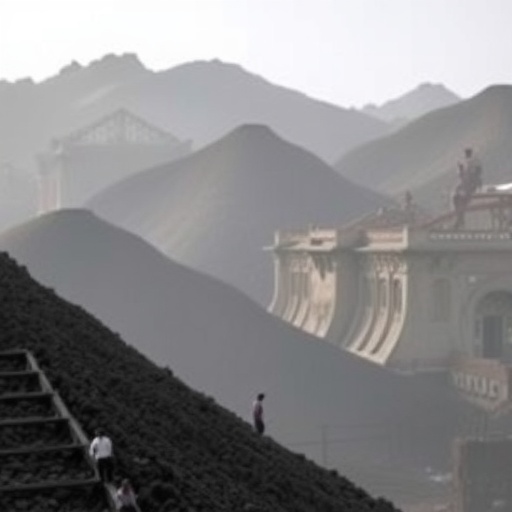The governance of coal resources in the Sindh province of Pakistan represents a critical intersection of energy policy, environmental sustainability, and socioeconomic development. As the world grapples with the urgent need to transition to cleaner energy sources, the utilization of coal in regions endowed with abundant reserves, like Sindh, continues to provoke intense debate. The province is home to one of the largest coal deposits in the world, and yet, the management of these resources poses significant challenges. Recent evaluations highlight the urgent need for systematic reform in governance structures to better leverage these resources for sustainable and equitable development.
Historically, coal has been a cornerstone of energy production in Sindh, but it has also been at the center of controversies surrounding environmental degradation and human rights violations. Open-pit mining has led to significant changes in local ecosystems, affecting the livelihoods of communities residing in proximity to coal fields. Beyond ecological concerns, the traditional governance frameworks have often been criticized for failing to include local stakeholders effectively. Thus, understanding the existing governance landscape is paramount for addressing the multifaceted challenges that arise from coal exploitation in Sindh.
At the heart of the governance challenges are issues of corruption, lack of transparency, and insufficient regulatory frameworks. The provincial government’s engagement with private entities has frequently been mired in opacity, leading to allegations that the benefits of coal resources accrue disproportionately to investors, while local communities struggle to assert their rights. The unmonitored extraction processes have often resulted in significant land degradation and health problems for nearby residents, further necessitating a reevaluation of the governance systems in place.
International interest in Sindh’s coal resources escalated following the establishment of the China-Pakistan Economic Corridor (CPEC). The influx of foreign investment has the potential to catalyze development but also raises concerns over the prioritization of profit over people. Local populations have voiced their apprehensions regarding displacement and inadequate compensation, which, if left unaddressed, might lead to social unrest. Governmental response strategies must thus pivot towards more inclusive and participatory forms of governance.
Furthermore, economic diversification has been touted as a critical element for sustainable growth in Sindh. Relying predominantly on a single resource like coal can lead to vulnerabilities, especially in a global environment increasingly hostile to fossil fuels. Policymakers must outline comprehensive frameworks that promote not only the efficient exploitation of coal but also investment in renewable energy sources. Transitioning towards a diversified energy portfolio could bolster economic resilience while addressing climate change imperatives.
The current framework lacks robust measures for stakeholder engagement. Local communities, environmental organizations, and NGOs often remain sidelined in critical discussions about the governance of coal resources. Establishing inclusive platforms for dialogue that feature the voices of marginalized groups will be crucial. Such strategies could pave the way for more equitable decision-making processes and foster a sense of community ownership over resource governance.
Legislative reforms are paramount in shaping a governance system that is responsive to the contemporary needs of Sindh’s populace. There is a pressing need for policies that not only prioritize economic growth but incorporate environmental safeguards. The governance framework must evolve to ensure that the rights of workers, displaced communities, and future generations are adequately protected through sustainable practices.
Another significant aspect of governance is the integration of technological innovations, like remote sensing and data analytics, in monitoring coal mining operations. These technologies can enhance transparency, provide real-time data, and allow for more efficient regulation of the mining sector. Governmental authorities must invest in such technologies to foster a culture of accountability and performance tracking in the coal sector.
Public awareness campaigns play a pivotal role in catalyzing change within governance structures. Educating communities about their rights and the implications of mining can empower civil society to demand better governance outcomes. As public discourse becomes increasingly aware of environmental rights, local populations will be more equipped to negotiate the benefits and detriments associated with coal resource governance.
Ultimately, the path forward lies in collaborative governance models that align the interests of various stakeholders, including government bodies, corporations, and local communities. This multilayered approach can ensure a more balanced equilibrium between resource extraction and societal benefit. By weaving together the economic, social, and environmental dimensions of coal governance in Sindh, stakeholders can revolutionize the narrative surrounding this valuable resource.
In conclusion, the governance of coal resources in Sindh is at a pivotal juncture. Reforming governance structures to enhance transparency, accountability, and stakeholder engagement will be instrumental in converting these challenges into opportunities for sustainable development. The demands for reform signal a broader movement towards responsible resource management, one that prioritizes both economic growth and the welfare of local populations. As such, the global community looks on in anticipation of how regulatory frameworks will transform the coal landscape in Sindh, and by extension, influence global dialogue on energy governance.
Subject of Research: Governance of coal resources in Sindh, Pakistan
Article Title: Governance of coal resources in the Sindh province (SE-Pakistan): an evaluation of challenges and reforms.
Article References:
Channa, R.B., Lohmeier, S. Governance of coal resources in the Sindh province (SE-Pakistan): an evaluation of challenges and reforms.
Discov Sustain 6, 1156 (2025). https://doi.org/10.1007/s43621-025-02142-4
Image Credits: AI Generated
DOI: 10.1007/s43621-025-02142-4
Keywords: Governance, coal resources, Sindh, Pakistan, energy policy, sustainable development




